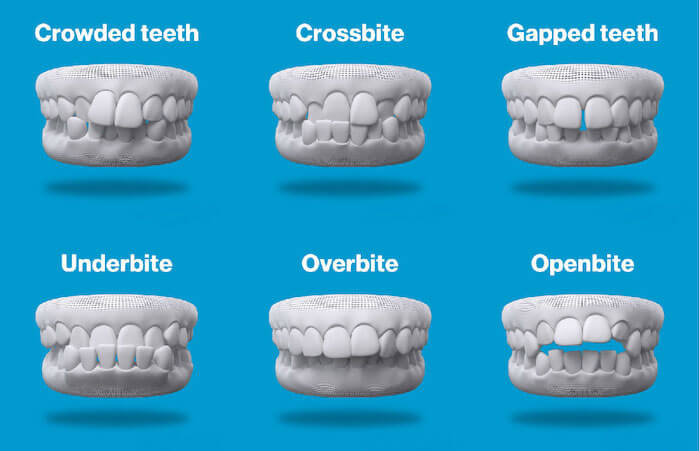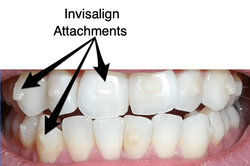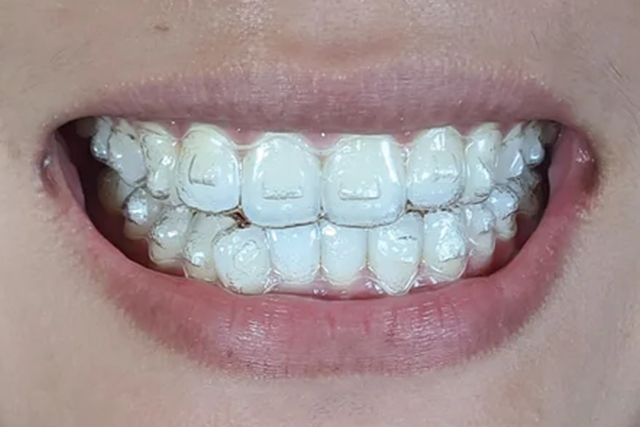Invisalign for Teens: A Modern Solution to Straightening Young Smiles
Invisalign for Teens: A Modern Solution to Straightening Young Smiles
Blog Article
Invisalign vs. Typical Dental braces: Which Option Is Right for You?
When thinking about orthodontic therapy, the selection in between Invisalign and typical braces provides numerous crucial aspects that warrant cautious examination. Invisalign supplies a very discreet choice with detachable aligners, while traditional braces offer a more visible yet efficient option for extreme imbalance. Each choice includes unique advantages and disadvantages connected to looks, comfort, therapy period, and price. Recognizing these subtleties is vital for making an educated decision that lines up with your personal preferences and lifestyle. The question remains: which option will best fulfill your orthodontic demands and assumptions?
Overview of Treatment Alternatives

In contrast, standard dental braces are composed of steel brackets and wires that are adhered to the teeth. This approach applies continual pressure with time to attain placement. While effective for complicated orthodontic concerns, conventional braces need normal brows through for adjustments and can position obstacles in maintaining dental hygiene due to the trouble of cleaning about brackets and wires.
Both choices have their benefits, and the selection usually rests on specific oral conditions, way of life choices, and client conformity. Eventually, seeking advice from an orthodontic expert is essential for figuring out the most ideal treatment strategy customized to specific needs. Understanding the subtleties of each alternative can considerably affect the total success of orthodontic therapy.
Visual Considerations
A substantial element influencing the selection in between Invisalign and traditional braces is the visual charm each therapy provides. Invisalign aligners are crafted from clear plastic, making them basically unseen when put on. This very discreet look is particularly interesting adults and teens that might really feel uncomfortable regarding their orthodontic therapy. The capacity to maintain an all-natural smile throughout the alignment procedure can substantially boost the individual's self-confidence in social and professional setups.
On the other hand, conventional braces include steel braces and wires, which can be much more noticeable. While advancements in orthodontic technology have actually resulted in the advancement of smaller sized brackets and tinted elastics, typical braces still maintain an even more obvious account. For some people, the presence of braces might deter them from seeking essential treatment.
Inevitably, the selection between Invisalign and conventional braces might hinge on personal preferences relating to aesthetics. People who prioritize discretion often lean toward Invisalign, while those that are less concerned concerning exposure may go with standard dental braces. Understanding the visual implications of each alternative is vital for making a notified decision that straightens with one's lifestyle and choices.
Convenience and Convenience

In terms of comfort, Invisalign aligners are removable, allowing patients to appreciate their favored foods without limitation and maintain optimum dental health. Cleaning and flossing are simplified, as the aligners can be taken out during these routines, whereas typical dental braces call for careful maneuvering around cords and braces.
Furthermore, Invisalign's progressive system allows for less orthodontic brows through. Clients generally receive multiple sets of aligners at more information the same time, which can simplify the treatment procedure and decrease time invested in the orthodontist's chair. On the other hand, standard dental braces demand normal modifications, making them much less practical for those with hectic timetables. Invisalign. On the whole, the comfort and comfort of Invisalign make it an appealing selection for several people looking for orthodontic therapy.
Therapy Period and Effectiveness
While both Invisalign and conventional braces are reliable in remedying oral imbalances, the period of therapy can vary considerably in between both choices. Commonly, Invisalign therapy can take anywhere from 12 to 18 months, depending on the complexity of the instance. The clear aligners function by progressively shifting teeth into their desired placements, and normal follow-ups with an orthodontist aid guarantee progression stays on the right track.
In comparison, standard dental braces commonly need a longer dedication, generally varying from 18 months to 3 years. This is because of their fixed nature and using braces and wires, which can be more efficient for severe imbalances and intricate instances (Invisalign). The treatment performance of typical dental braces is well-documented, as they permit accurate adjustments and greater control over tooth movement
Eventually, the option in between Invisalign and typical click here for more info dental braces may rest on both the expected treatment duration and the specific oral problems at hand. Consulting with an orthodontist is essential, as they can give customized recommendations based on specific needs, making sure the chosen approach aligns with preferred timeframes and outcomes.
Price Comparison and Insurance Coverage Choices
Expense plays a considerable function in the decision-making process for individuals thinking about orthodontic therapy, whether deciding for Invisalign or traditional braces. Typically, the cost of Invisalign ranges from $3,000 to $8,000, while traditional braces usually set you back between $2,000 and $6,000. Factors affecting these prices include the complexity of the situation, the duration of treatment, and geographical place.
Numerous dental insurance coverage plans offer partial coverage for orthodontic treatments, yet the specifics can differ extensively. Normally, traditional braces might be a lot more regularly covered by insurance coverage plans compared to Invisalign, which some insurers categorize as an aesthetic treatment.
Additionally, a number of orthodontic methods supply versatile payment strategies, making both therapy choices extra available. Clients need to ask about prospective financing choices and discounts for upfront repayments. Assessing the total price, including insurance coverage benefits and payment plans, is essential for making a notified decision that aligns with both visual choices and budget factors to consider.

Verdict
In summary, the choice in between Invisalign and traditional braces rests on multiple elements, including visual preferences, convenience, treatment period, and cost. Invisalign uses a discreet, detachable choice that facilitates dental health and dietary flexibility, while conventional braces might be better for complex oral concerns and commonly come at a lower rate point. Ultimately, assessment with an orthodontist is vital to assess specific scenarios and identify the most proper treatment option my site for achieving optimum dental alignment.
When taking into consideration orthodontic therapy, the choice in between Invisalign and standard braces presents numerous crucial elements that merit mindful examination.Comparing Invisalign and traditional dental braces discloses unique therapy choices for orthodontic correction.While both Invisalign and standard braces are reliable in fixing oral misalignments, the period of therapy can vary significantly in between the two alternatives.Expense plays a significant duty in the decision-making process for people thinking about orthodontic therapy, whether choosing for Invisalign or typical dental braces.In recap, the option in between Invisalign and conventional dental braces hinges on numerous factors, including visual choices, convenience, treatment duration, and expense.
Report this page